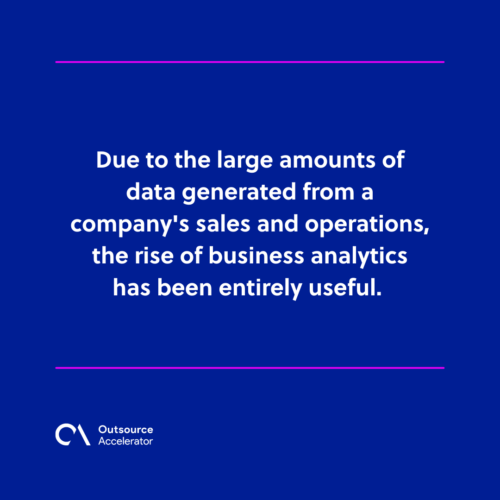Understanding cohort analysis: A beginner’s guide

Long-term company success is dependent not just on acquiring new clients but also on maintaining and providing them with customized experiences tailored to their needs.
Due to the large amounts of data generated from a company’s sales and operations, the rise of business analytics has been entirely useful.
It helps businesses improve their profits and customer experience.
This article will tackle the basics of cohort analysis, its importance, types, and processes.

What is cohort analysis?
The term “cohort analysis” refers to behavioral analytics in which a business categorizes its customers into cohorts based on shared or comparable traits.
A simple example of a cohort can be all users who engage first in the forum before taking action on the page. There are many ways that customers can be grouped according to their common characteristics.
A cohort analysis is also an observation of what the active users are doing with a product, identifying who among the group of users is most engaged with the company’s product.
Through cohort analysis, a company can examine trends and patterns of the customer lifecycle to adapt and tailor its services to those specific cohorts.
In addition, it is an informative analytics tool that every business owner should have to know how user behavior can affect a business.

2 types of cohort analysis approach
Cohort analysis helps compare how the same behaviors differ for different cohorts and track how users behave over time.
There are two ways to break a group of users into cohorts for cohort analysis:
Acquisition cohorts
This cohort approach divides users when they sign up first for your product. It also segments users based on the acquisition date and the time of service when they sign up.
Acquisition cohort analysis tracks how long users continue to use a company’s products or applications from the start point.
Monitoring data from acquisition cohorts can be done daily, weekly, or monthly.
To determine the success of a newly released app, you may divide the number of users that downloaded it into different cohorts by day for the first week, by week for the first month, and so on.
Behavioral cohorts
This cohort analysis approach divides users based on their behavioral patterns while using an application or a company’s product within a given period.
In behavioral cohorts, this is where a group of users has done specific actions within a specified timeframe.
For example, they clicked on the ‘watch ads’ button during the first five days of application use.
Using this cohort analysis approach, the team can monitor how long these behavioral cohorts stay active after performing specific discreet actions in the application.
Utilizing behavioral cohorts provides an organization with greater insight into its user base.
This allows you to monitor what customers do or do not do with your company’s product.
Cohort analysis to run in business
Most businesses utilize cohort analysis to track and improve the retention rate of customers who use their services.
Cohort analysis is essential because it lets an organization determine which users leave and understand why they stop using a service or product.
To run a cohort analysis effectively, start by creating a cohort table. This is to make it easier to organize and compare groups based on specific criteria like acquisition date or demographics.
Cohort analysis is particularly beneficial for evaluating the lifetime value of existing customers and determining the most effective ways to retain and nurture their loyalty.
A cohort analysis report allows a company to strategize several ways to increase retention after analyzing what works and what does not for the products and services offered.
The following are examples of cohort analyses to run in a business:
Customer retention
Successful businesses and marketing strategies establish client loyalty and connections.
Conducting a customer retention cohort analysis is paramount in understanding customer behavior and fostering long-term relationships.
Customer retention can determine which cohorts are the most loyal, so companies can encourage them to stay longer and use their products or services.
One important measure to track in the field of customer retention is the number of monthly active users.
Leveraging customer success team expertise can help implement strategies to enhance customer experience, fostering long-term relationships with users.
Specialists may also perform customer churn analysis to derive further information.
To make informed decisions, using data analytics tools is essential in identifying trends, patterns, and areas for improvement, for a more data-driven approach to retaining customers effectively.
Customer lifetime value
Cohort analysis for customer lifetime value enables firms to see when customers stop buying their products.
With this cohort data, your marketing team can better plan your advertising expenses and campaign strategies.
It can also help them figure out what to do for the next trend to encourage customers to repurchase your products.
Research app performance
Cohort analysis is a favorite method of application analysts because it shows user interest in an app, activity inside an app, etc.
It helps app marketers better understand where users have difficulty using an app through research, surveys, or forums so developers can improve it.
How cohort analysis helps with customer retention
Marketers are responsible for various activities, such as executing ads, modifying the client onboarding process, and introducing new product features.
Cohort analysis aids in assessing the success of each of these endeavors.
Customer cohort analysis helps a firm understand what makes customers loyal to its brand. Studying cohort data also boosts customer retention by improving product features and offers.

The data can also be visualized into a cohort analysis chart. Cohort analysis charts help the marketing team see who among the users is more likely to buy and engage.
Organizations can apply the results of cohort analysis to their offers, ad targeting, and personalized email.
Doing so can help them improve customer retention, dig deeper into behavioral data, and eliminate churns.







 Independent
Independent




